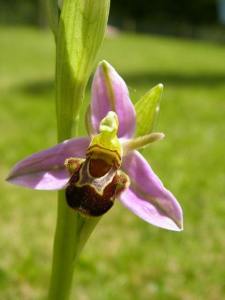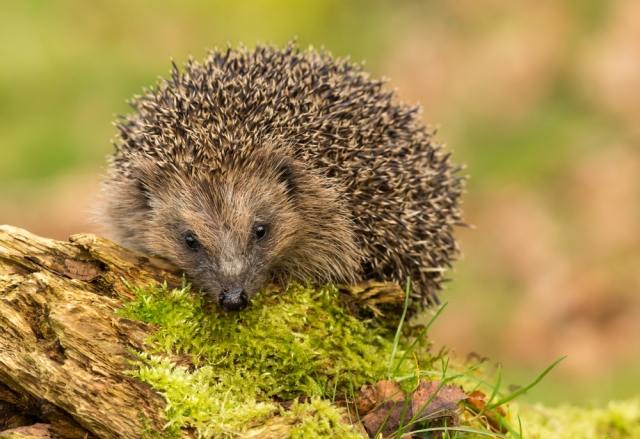Met Office
|
|
Celebrating nature in a time of crisis
Blog posted by: Met Office Press Office, 22 May, 2020.
As the world celebrates, today, the International Day for Biological Diversity, we turn our attention to the efforts to create a natural haven for wildlife and people at our Exeter headquarters.
The wildflower meadow is a key element of the Met Office’s most precious wildlife habitats. Picture: Phillip Gill.
Grahame Madge is the chair of the Met Office Biodiversity working group – a group of wildlife enthusiasts from across the office who have been helping boost nature on site for the benefit of wildlife and staff since 2008. He said:
“As the lives of people around the world have been transformed by the pandemic, many people have begun to pay more attention to nature. Whether it’s being accompanied by the buzz of insects on a walk, or the snatches of birdsong that brighten a video conference call, nature is being noticed and appreciated, bringing the occasional smile or warm glow in otherwise challenging times.
“Although the decline in the abundance of some species across the UK is a crisis, we are never far from nature: it is all around us. Access to nature has proven benefits that can help people’s mental and physical health, but it also creates a responsibility: wildlife is part of our community and we have a duty of care to protect it.
“That’s very much the view of the Biodiversity Working Group which has strived to improve the fortunes of species around our site for over a decade, while creating opportunities for staff and visitors to connect with nature.”
The working group helps the Met Office improve the diversity of wildlife on its sites, especially at its Devon headquarters. Although compact, the site, on the outskirts of Exeter, contains some wildlife-rich areas, including: two ponds; numerous stands of trees and hedgerow; and a botanically-diverse area of grassland.
Bee-orchid is a priority species for Met Office conservation management.
One of the greatest successes has been the work to boost the population of bee-orchids, which have flourished on site and increased year on year so we now have over 300 individual bee orchid plants, thanks to sensitive management, including a specific grass-mowing regime.
The botanically-rich grassland includes several species of note, especially corky-fruited water dropwort and crested dogstail grass. Grahame Madge added: “In summer, the grassland is studded with the colours of meadow flowers, including knapweed, vetches and ox-eye daisies. The flowers provide nectar or pollen for a diversity of insects flitting from bloom to bloom, including marbled white butterflies, burnet moths and a variety of bumble-bees.
“The ponds attract a diversity of wetland wildlife, including reed warblers and newts. Occasionally, we’re visited by scarcer species, including a kingfisher and even an otter, which has spotted by one extremely lucky night-shift worker. However, although these highlights provide a talking point for staff, we really manage the site for the regularly-visiting species like the two species of newt, and the selection of bat species which take gnats and other insects from above the ponds on warm summer evenings.
By working with neighbouring residents, the Met Office is hoping to provide a sustainable haven for hedgehogs. The hedgehog, which has dramatically declined over the last few decades in the UK, is one of 23 species for which we will try to take action.
“The tapestry of wildlife is continually changing as climate and local development exert an influence, and we carry out routine monitoring of the species on site to help monitor trends. Last year, we recorded small red-eyed damselfly for the first time. This species is spreading through the UK, after colonising from continental Europe, presumably boosted by climate change.
The Met Office site is increasingly fringed with housing and we can expect the balance of species on the site to change. Predation by cats may affect our population of slow-worms, for example, but building relationships with our neighbours may help boost the populations of other wildlife such as hedgehogs, song thrushes or pollinating insects. Grahame Madge added: “We have met with representatives from local housing developments and we’re keen to work with them to boost nature in our shared community. Hedgehogs and insects will disperse across the neighbourhood and won’t stop at our boundaries. So by working with our neighbours we can introduce complementary management to help those species living in the wider community.”
The working group has just helped the Met Office refine the list of species that occur on site and would benefit most from conservation assistance.
Kathy Gray is the Met Office’s environmental advisor. She said:
“Across the list of 24 species, or species groups, we have tried to include those which are declining nationally or are species special to our part of Devon.
“We take our wildlife and environmental responsibilities extremely seriously and we are proud of the fact that our efforts are nationally recognised. The Met Office was the first UK Government organisation to hold the Wildlife Trusts’ Biodiversity Benchmark and we have been using our experience of wildlife management to work with Defra on the development of the Network for Nature initiative.”
Peter Dorans is the Corporate Relations Manager for The Wildlife Trusts. He said:
“Biodiversity Benchmark is a very demanding certification and provides assurance that the Met Office is managing its land to the very highest standards for wildlife. The Met Office has demonstrated that even in the grounds of a modern office in an urban location, wildlife can thrive.
“Our professional auditors have been particularly impressed by the efforts of the Biodiversity Working Group at the site to use all available areas for wildlife, such as converting amenity grassland to meadow, whilst still retaining a ‘corporate’ appearance. A great example of this is the project to display the Met Office logo in wildflowers. We believe that everyone should have the opportunity to experience the joy of wildlife every day and we know the site is highly valued by Met Office as a place for relaxing, enjoying nature and supporting wellbeing.”
Original article link: https://blog.metoffice.gov.uk/





